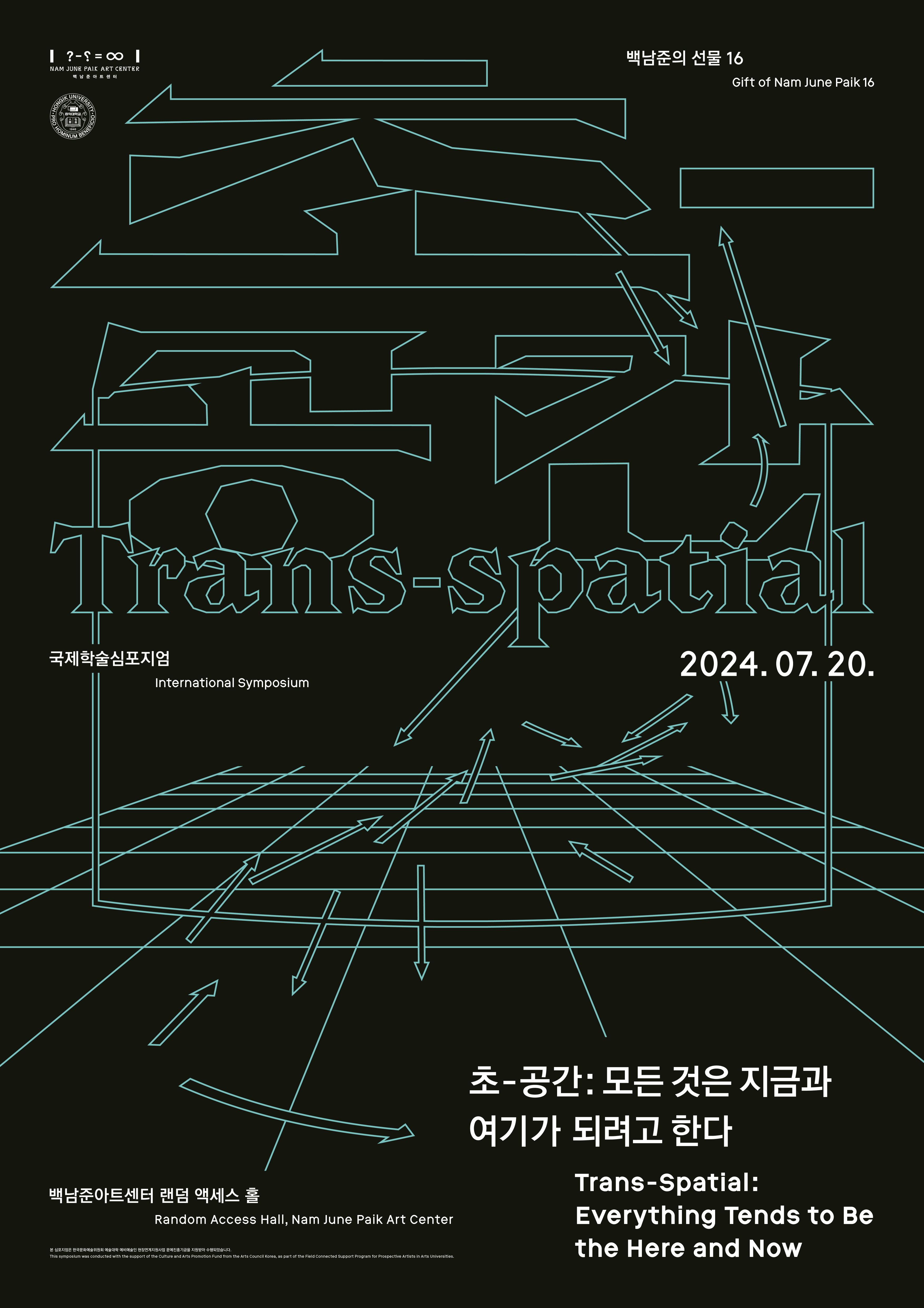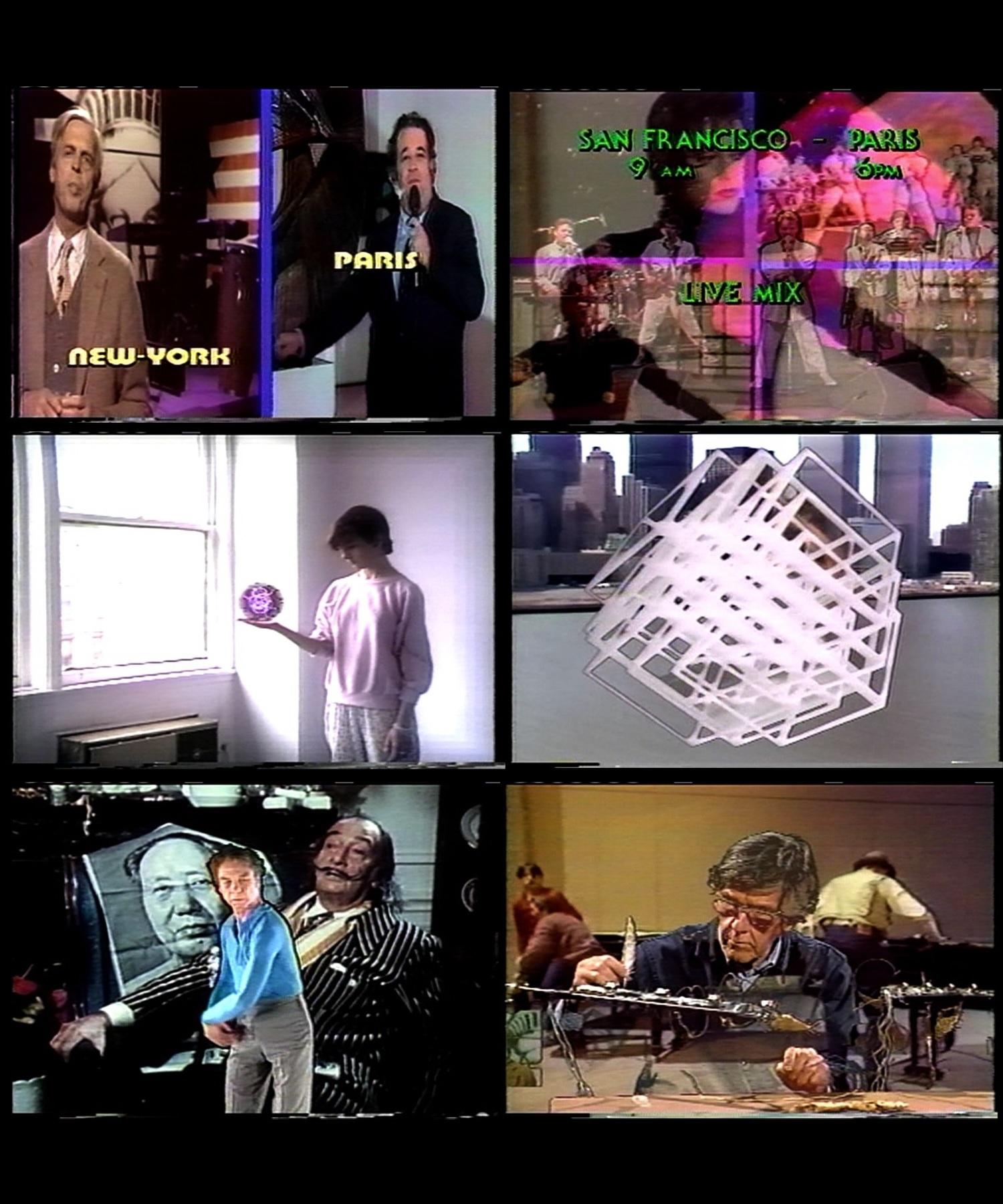
Commemorating the 40th anniversary of Nam June Paik’s satellite project Good Morning Mr. Orwell, Gift of Paik Nam June 16, Trans-Spatial: Everything Tends to Be the Here and Now and discusses the transcendent space and cognitive experiences mediated by media art. The symposium proposes the concept of ‘Trans-Spatial’ as a phenomenon transcending physical space. It is exploring experiences and phenomena where cognition extends beyond physically divided spaces or virtual spaces composed of data through Paik’s video works and the digital environment.
On January 1, 1984, Nam June Paik utilized broadcast satellites to transmit media art globally, redefining the concept of space for art appreciation. The current era of digital technology, which Paik foresaw in 1974 with his concept of the “Electronic Super Highways,” provides new creative and cognitive environments. Physical spaces and data spaces converge within a single visual frame, virtual reality offered by data spaces stimulates novel experiences, and artificial intelligence accumulates and analyzes experiential data to provide a new dimension of cognitive environments. In an ever-changing technological landscape, the experience of art transcends the boundaries of physically separated spaces and extends further into both analog and digital realms. This symposium shares research on the art experiences mediated by Nam June Paik’s satellite and television works, which initiated the concept of ‘Trans-Spatial,’ as well as contemporary media art. Nam June Paik, who predicted a society reorganized around media, stated that artists are the most effective group for creatively utilizing media. Media art dismantles time and space constraints, offering unprecedented situations through new cognition and creation. Through this symposium, we expect to gain new perspectives on the changes and phenomena we have experienced mediated by media art, and to foresee the future art experiences we will encounter.
This symposium is conducted with the support of the Culture and Arts Promotion Fund from the Arts Council Korea, as part of the Field Connected Support Program for Prospective Artists in Arts Universities.
PANELS

Lev Manovich
Lev Manovich is an artist, writer, and one of the most influential theorists of digital culture worldwide. He is currently a Presidential Professor of Computer Science at the City University of New York’s Graduate Center and the Director of the Cultural Analytics Lab. After studying painting, architecture, and filmmaking, Manovich began using computers to create digital art in 1984. He has played a key role in creating four new research fields: digital culture (1991-), software studies (2001-), cultural analytics (2007-) and AI aesthetics (2017-). He is the author of 190 articles and 16 books, including Artificial Aesthetics, Cultural Analytics, Instagram and Contemporary Image, Software Takes Command, and The Language of New Media, which has been called “the most provocative and comprehensive media history since Marshall McLuhan.” His projects have been exhibited in 14 solo and 1242 international group exhibitions at many prestigious institutions, such as the Institute of Contemporary Art (London), the Centre Pompidou, The Shanghai Biennale, and The ZKM | Center for Art and Media.
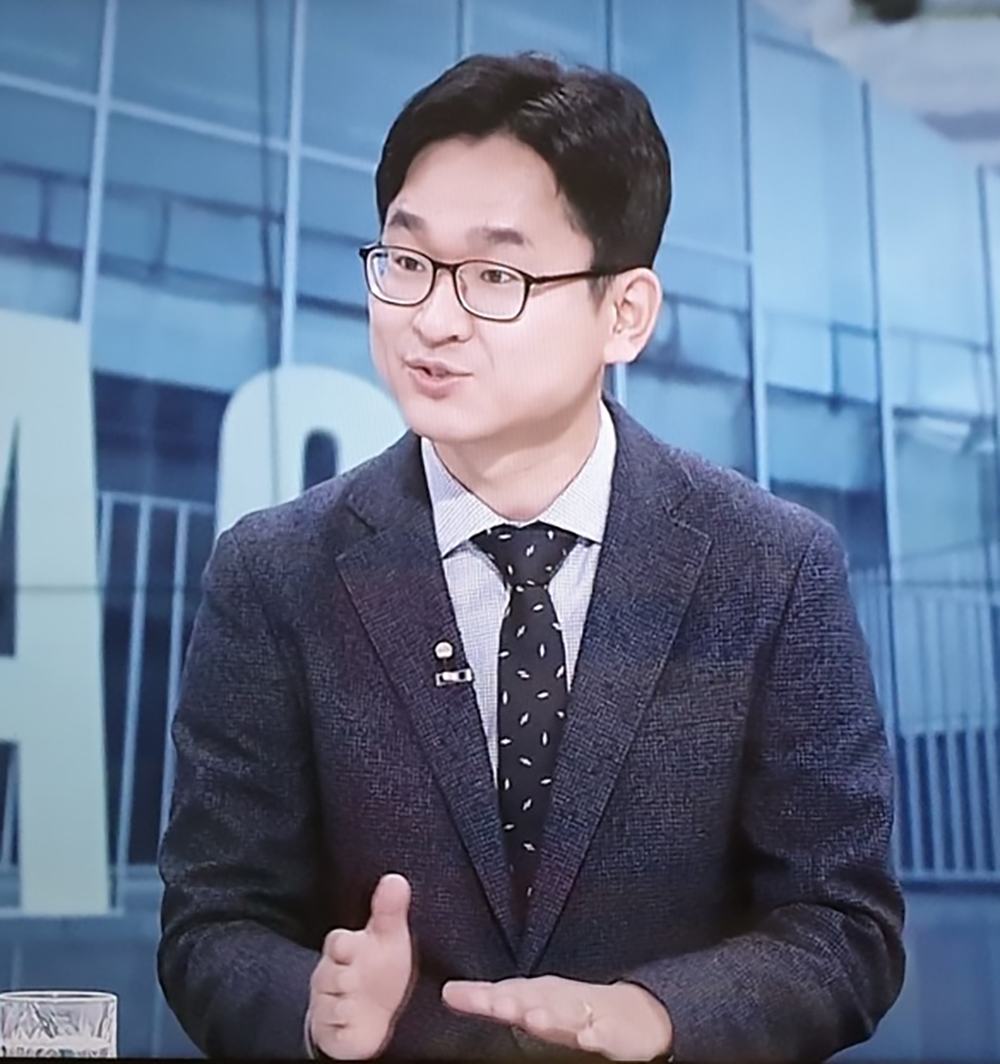
Shin Choonsung
Shin Choonsung conducts teaching and research on the convergence of media and technology at the Department of Media Content and Cultural Technology, Graduate School of Culture, Chonnam National University. He earned his PhD focusing on decision-making methods between AI and humans in intelligent environments. He has served as a postdoctoral fellow at Carnegie Mellon University, a principal researcher at the Korea Electronics Technology Research Institute, and a PD in cultural technology R&D at the Ministry of Culture, Sports, and Tourism/Korea Creative Content Agency. His research focuses on the convergence of “culture×technology×art” to enhance human senses and experiences, including intelligent content mash-ups in mixed reality spaces, metaverses for individual creators, and empathetic content for generational understanding in spatial computing environments.
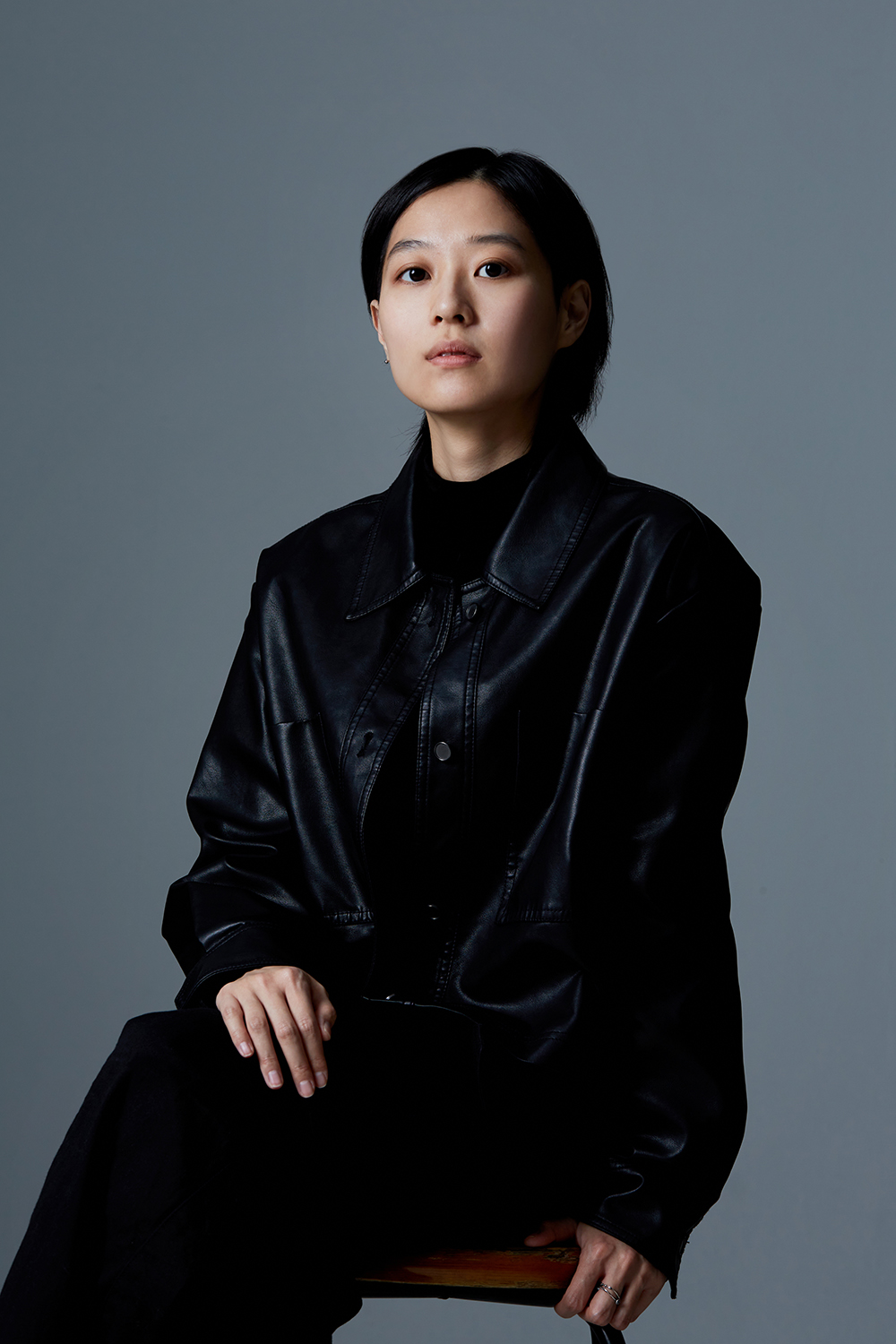
SANGHEE
SANGHEE works across multiple genres, including VR, sound performance, and games, as well as two-dimensional media. She is interested in the gaps and emotions that audiences experience when physical inputs from the real world are output to the virtual world, or when they are re-output to the real world via the virtual world. She adopts the mechanics of Video games for her interactive arts to encourage bodily feedback. She focuses on the affective materiality experienced in VR. She studies game design to apply the mechanics that video games use to encourage player behavior to her artwork. Her Oneroom-Babel (2022-2023) won the Award of Distinction at the Prix Ars Electronica and was nominated at Venice Immersive Competition.
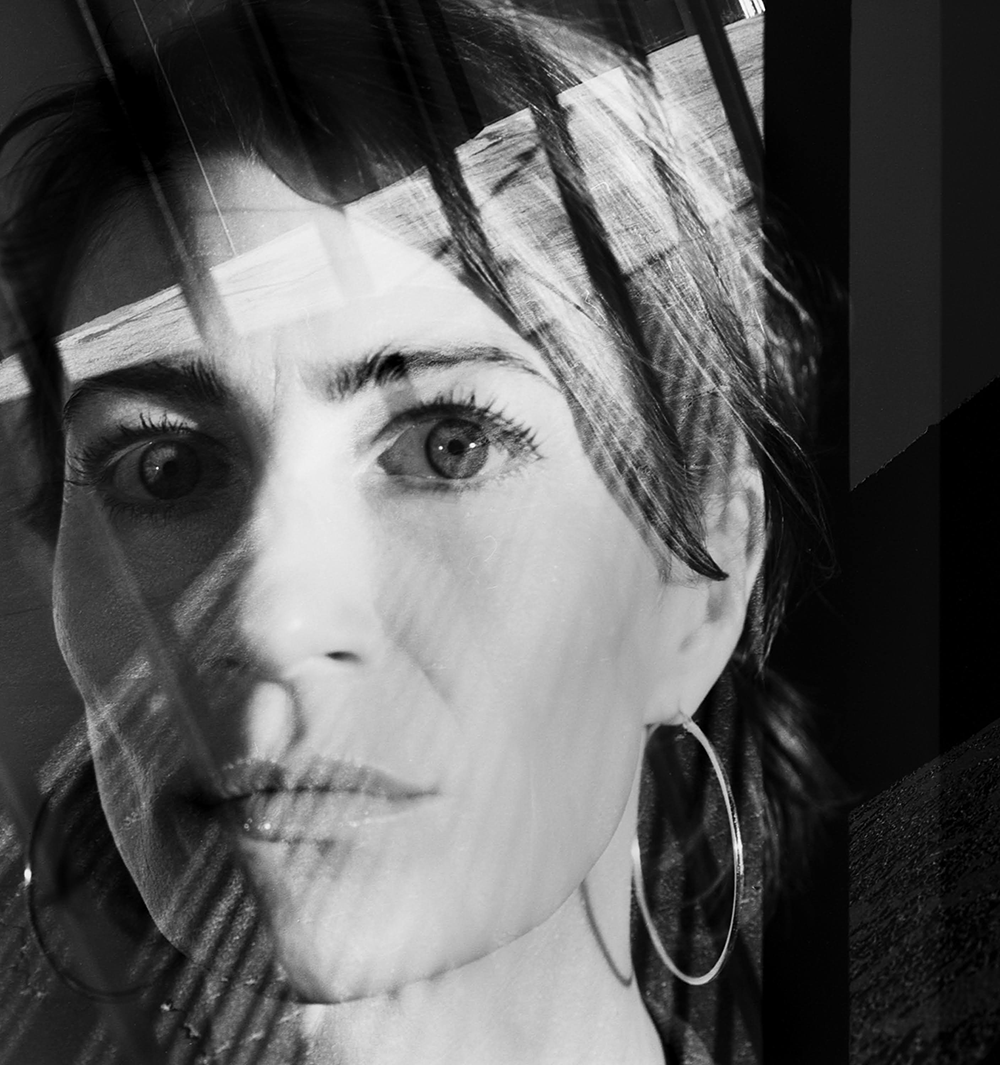
Nancy Baker Cahill
Nancy Baker Cahill is an interdisciplinary artist and expanded filmmaker whose hybrid practice focuses on systemic power, consciousness, and the human body. She creates research-based immersive experiences, video installations, and conceptual blockchain projects rooted in the history of drawing. Her monumental augmented reality (AR) artworks extend and subvert the lineage of land art, often highlighting ecological imagination, civics, and a desire for more equitable futures. She is the Founder and Artistic Director of 4th Wall, a free, AR public art platform exploring site interventions, resistance, and inclusive creative expression. Baker Cahill is an artist scholar alumnus of the Berggruen Institute and a TEDx speaker. In 2021, she was awarded the Williams College Bicentennial Medal of Honor and a C.O.L.A. Master Artist Fellowship. She is a 2022 LACMA Art and Tech Grant recipient, and 2024-5 Harvard metaLAB Affiliate. Her work is held in the collections of the Los Angeles Museum of Contemporary Art, Los Angeles, CA; Whitney Museum of American Art, New York, NY; The Museum of Art and History, Lancaster, CA; RFC Art Collection, Miami, FL; and 0x Collection, Prague, CZ.
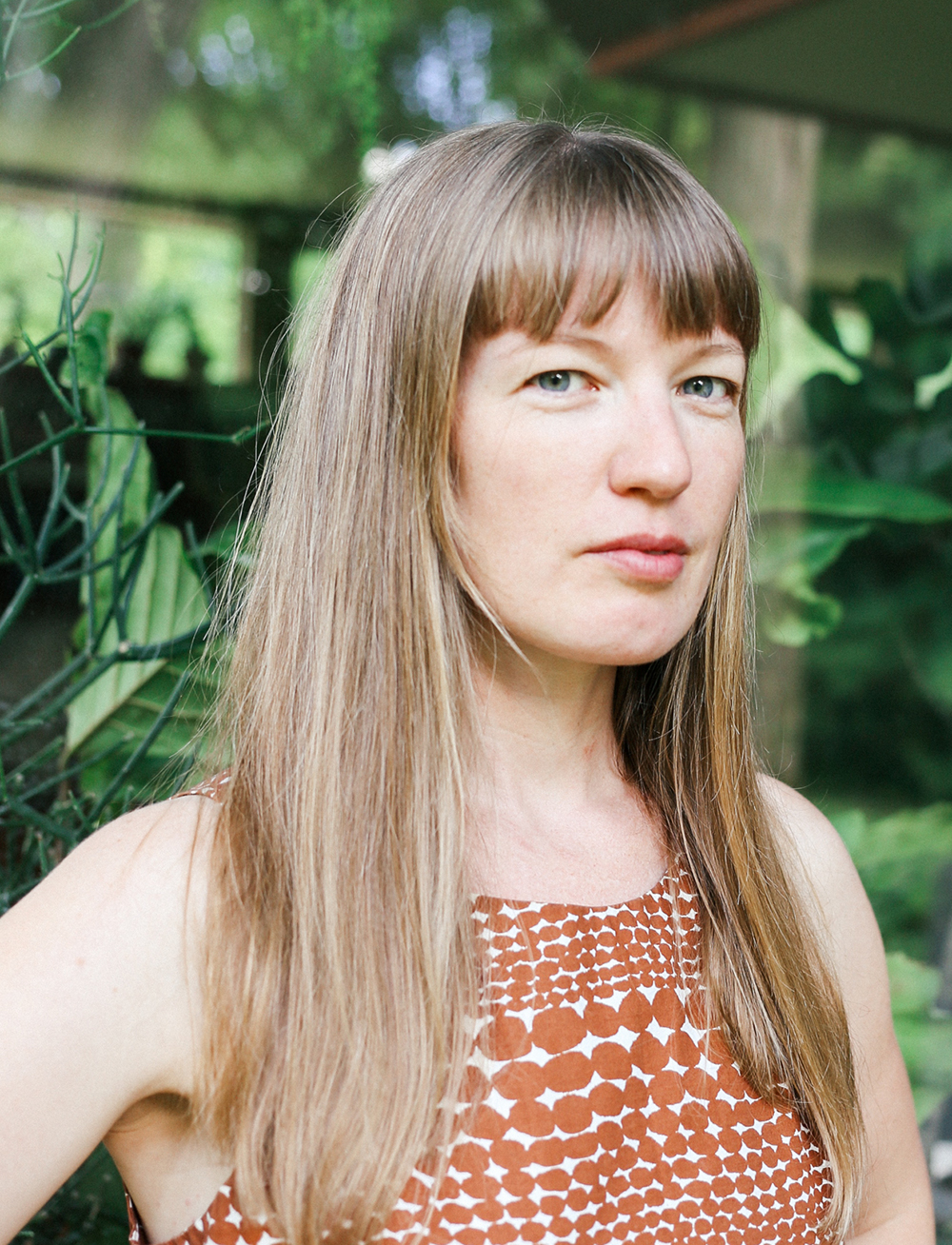
Kris Paulsen
Dr. Kris Paulsen is a specialist in contemporary art, with a focus on time-based, computational, and immersive media. She is Associate Professor in the Department of History of Art and Theater, Film, and Media Arts at The Ohio State University in Columbus, Ohio (USA). Her work traces the intersections of art and engineering, with a particular emphasis on telepresence, virtuality, and Artificial Intelligence. She has written extensively on the work of Nam June Paik, including on his satellite works in her book Here/There: Telepresence, Touch, and Art at the Interface (MIT Press, 2017), his productions for WGBH in Early Video and Experimental Film Networks (Presses du reél, 2017), and a forthcoming essay on early video synthesizers and generative image making in The New Television: Art after Television (MIT Press/No Place Press, 2024).
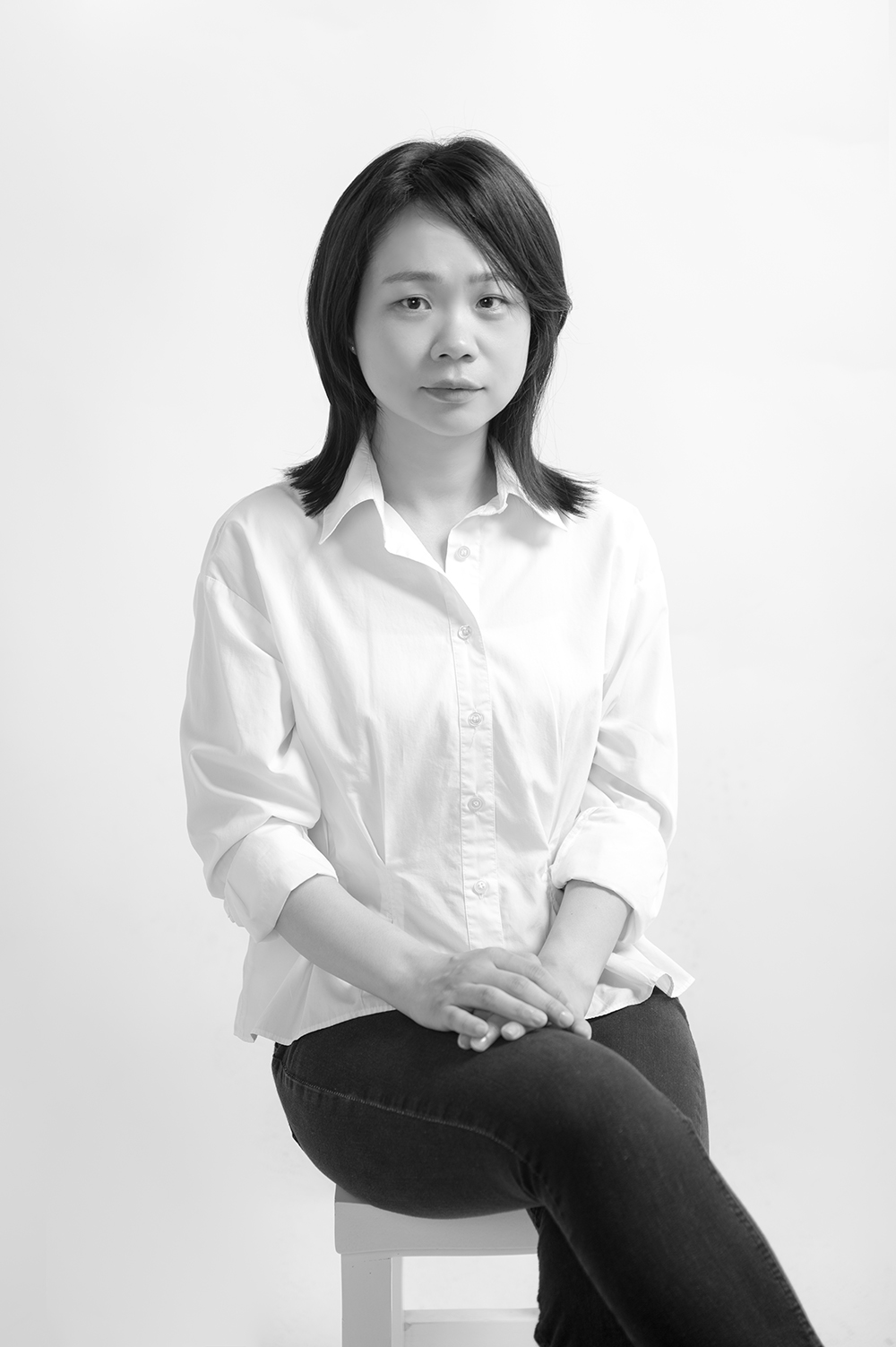
Min Kyungso
Min Kyungso researches global modern and contemporary art history and theory, with her main interests including language and (post)translation in technology-based contemporary art, and the future of posthuman and disabled corporeality. She earned her PhD in art history from the University of Wisconsin-Madison, with a dissertation that proposed Nam June Paik’s satellite work as the origin of post-translational communication in East Asian new media art. She has been a fellow at the Smithsonian Museum, the Japan Foundation, and the Kyujanggak Institute for Korean Studies. Currently, she teaches art history at Seoul National University and the Korea National University of Arts. Her recent publications include “Walking as a Layer of Relationships: A Study on Janet Cardiff and George Bures Miller’s Walks Series” (2023), “Young-Hae Chang Heavy Industries’ User-Unfriendly Texts and the Disabled Reading” (2022), and “Body-Specific Time: Miyajima Tatsuo’s Embodied Void” (2022).
Trans-Spatial: Everything Tends to Be the Here and Now





